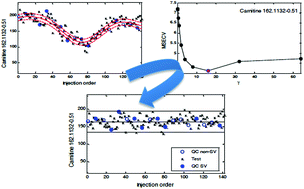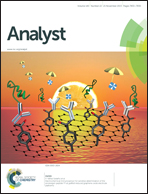Intra-batch effect correction in liquid chromatography-mass spectrometry using quality control samples and support vector regression (QC-SVRC)
Abstract
Instrumental developments in sensitivity and selectivity boost the application of liquid chromatography-mass spectrometry (LC-MS) in metabolomics. Gradual changes in the LC-MS instrumental response (i.e. intra-batch effect) are often unavoidable and they reduce the repeatability and reproducibility of the analysis, decrease the power to detect biological responses and hinder the interpretation of the information provided. Because of that, there is interest in the development of chemometric techniques for the post-acquisition correction of batch effects. In this work, the use of quality control (QC) samples and support vector regression (QC-SVRC) and a radial basis function kernel is proposed to correct intra-batch effects. The repeated analysis of a single sample is used for the assessment of both the correction accuracy and the effect of the distribution of QC samples throughout the batch. The QC-SVRC method is evaluated and compared with a recently developed method based on QC samples and robust cubic smoothing splines (QC-RSC). The results show that QC-SVRC slightly outperformed QC-RSC and allows a straightforward fitting of the SVRC parameters to the instrument performance by using the ε-insensitive loss parameter.


 Please wait while we load your content...
Please wait while we load your content...